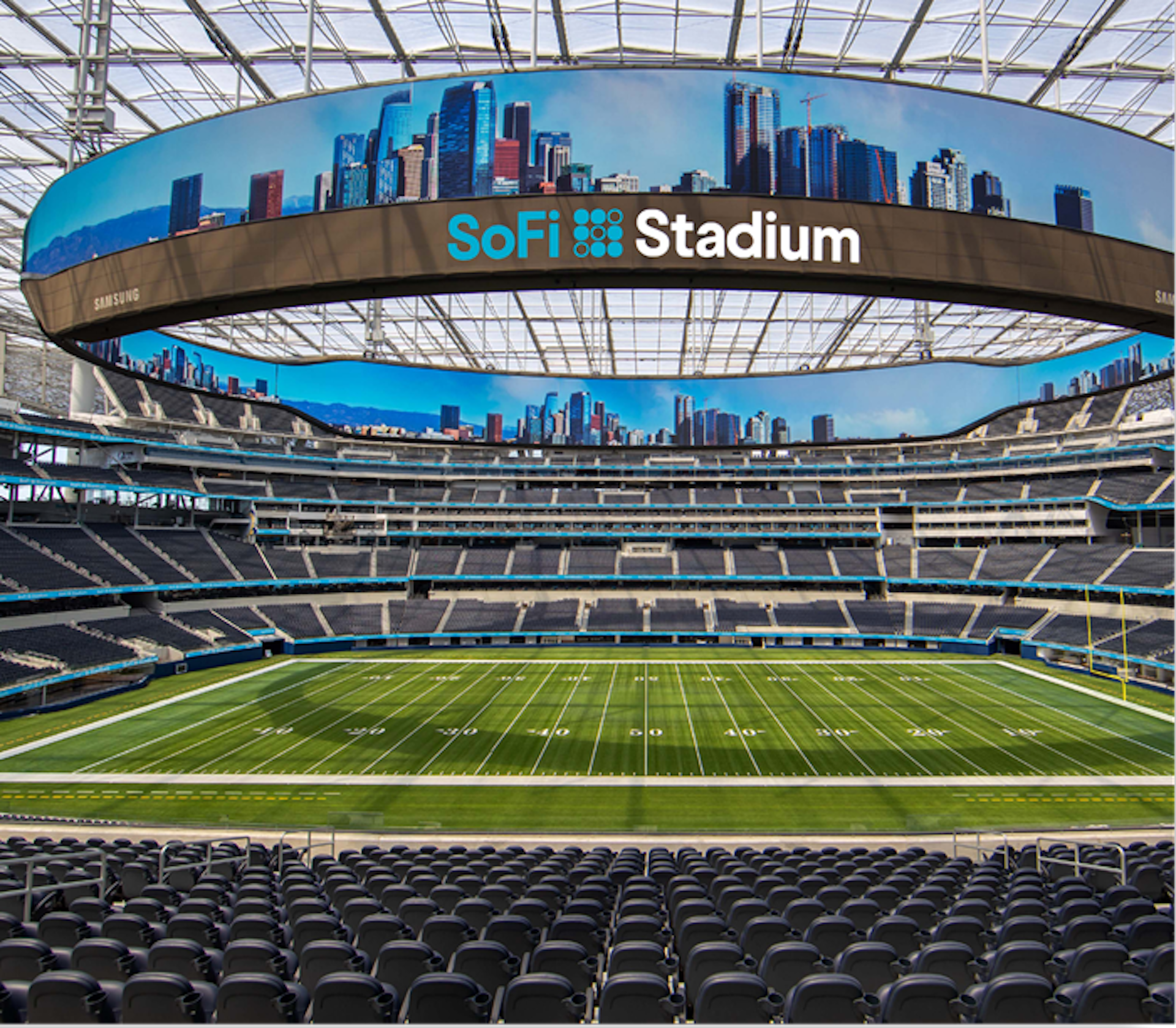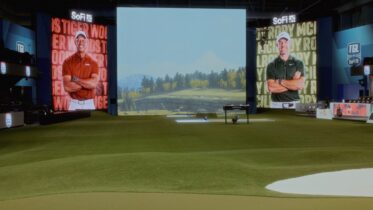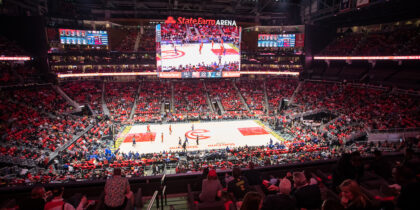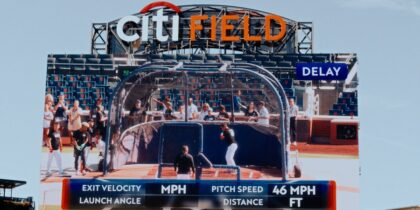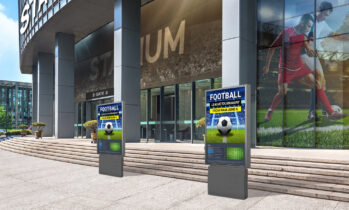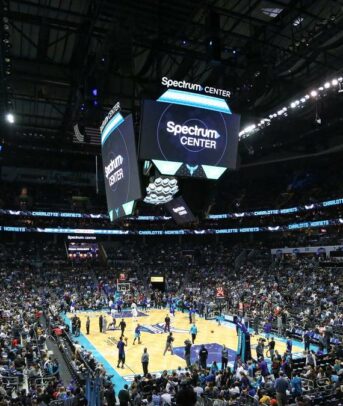Big, dazzling digital video scoreboards at the center of a stadium or arena are no longer just for professional teams. High schools and colleges can achieve similar pizzazz and big-screen action without spending big bucks, thanks to advancements in display technology.
The benefits of the investment are many — and immediate. The addition of a digital video scoreboard upgrades game day with high-definition, live-action replays, graphics, animations, team messages and fan interaction. A high-tech video scoreboard also presents an opportunity for schools to increase revenue by attracting bigger attendance and sponsorship. That way, schools can recoup the investment in just a few years and continue to create new revenue streams throughout the display’s lifetime.
For a school or college that’s interested in staying ahead of the competition by investing in a video scoreboard, it’s important to ask a few essential questions to find the best scoreboard for your needs.
1. How much does a video scoreboard cost?
Large format video scoreboards used to cost an unattainable amount for most small schools. But now the same technology used in professional stadiums can be purchased for a lot less. While it’s still an investment, the return can be far greater, as a video board lifespan can extend more than 10 years. Samsung XHB series, for example, helps save costs by running efficiently and reducing power consumption by up to 22.2% compared to conventional products.
Drive revenue by surpassing venue expectations
Explore digital opportunities to deliver more immersive experiences and increase fan loyalty. Download Now
2. How can schools offset the cost of a video scoreboard?
A video scoreboard has the potential to pay for itself within the first few years of operation.
The main revenue opportunity is through selling on-screen advertising space. A brand-new video board will be the talk of the community, so it’s an ideal place for local businesses to advertise. Compared to the old-fashioned, static ad space, the clear, brilliant and moving image of digital signage grabs far more attention. Plus, a video board can cycle through a limitless number of ads when not in game mode.
Sponsorship is another revenue stream. The video scoreboard can be “presented” by one or more businesses, who may sponsor instant replays, halftime entertainment and fan interactions. That’s a win-win for all.
The addition of a video board opens a wealth of options for a school to host or rent out other ticketed events beyond sports. Concerts, ceremonies, dances, pep rallies and school booster events can all use the video board to enhance the event and make it more memorable.
3. What should you look for when selecting a scoreboard?
There are several important factors to consider as you finalize your choice of video board and your supplier:
- Size: Scoreboards come in all shapes and sizes — from the 360-degree center-hung screen at State Farm Arena to the game-changing Infinity Screen at SoFi Stadium. That means the first thing to do is decide on the best screen size and shape to suit your needs. Outdoor LED products by Samsung offer a wide range of both. For the most impactful video board, it’s important to get the right size so fans in the furthest seats can clearly see in all weather conditions.
- Panel spec: If the panel specification is subpar, don’t be surprised if the viewing experience is, too. Key things to consider when selecting an outdoor LED panel are high brightness, so images remain vivid in direct sunlight, snow or dark lighting; contrast ratio, to boost picture clarity; refresh rate, to prevent image distortion; and pixel pitch, the space between the RGB pixels. It’s also worth considering how rugged an outdoor installation will need to be, as water, ice, dust and humidity can be problematic. That’s why Samsung rigorously tests against weather elements during product development.
- Vendor: Support is crucial in explaining the jargon and picking out the best options for your space, such as the best screen size and pixel pitch for the viewing distance. Choosing a trusted brand provides peace of mind throughout the video screen’s lifespan.
4. Who will operate your scoreboard?
Having an experienced AV operator isn’t essential. Software solutions such as ScoreVision enable users such as students to create and push professional-level content to the in-venue display. Students can create and display pregame hype videos, time-out and half-time content, fan interactions, player shoutouts and more on the scoreboard. ScoreVision offers schools an affordable and accessible way to run their display while helping students learn and gain experience with audiovisual tech.
For other outdoor signage, Samsung also offers Creative Engine, which provides access to customizable templates for game day content. A simple point-and-click interface creates professional-looking, optimized content in a matter of minutes.
5. How does the installation process work?
Samsung can be a white-glove installation partner to guide and deliver every aspect of your new display — from design and structural engineering to construction, integration, operation and maintenance.
For installation, Samsung can offer a suite of structural and electrical engineering services in addition to its construction and fabrication services to schedule and assemble the final product. Once the display is in place, Samsung offers audio and control integration systems.
The addition of a video scoreboard is more than just a big-screen statement. Innovative display technology keeps schools relevant in a rapidly evolving market. Even at small schools, fans are demanding more from live events. Having the latest video board elevates the game day and fan experience — while bringing communities together to generate team spirit.
Samsung is redefining the venue experience with immersive technology. See how seamless integration between digital displays, mobile devices, touchscreen kiosks and a powerful CMS delivers the convenience fans want and the moments that will keep them coming back for more. Explore digital opportunities to deliver more immersive experiences and increase fan loyalty in this free guide.
